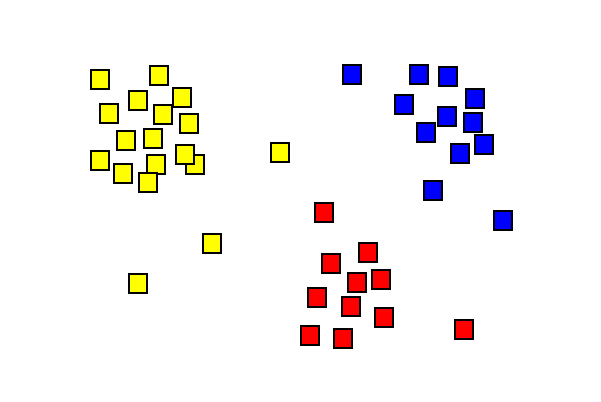Clustering
Contents |
[edit] Introduction
Clustering is a method of pre-qualification for the procurement of construction projects. It applies the concepts of cluster analysis (which is a statistical technique used in many fields, including marketing, social science and computer science) as a classification method often used for data mining purposes.
[edit] What is cluster analysis?
When used in statistics, cluster analysis is used to divide data into groups (clusters) based on similar traits or characteristics. The goal is to identify traits that are meaningful, useful or both.
Cluster analysis refers not to one specific algorithm, but to the general task to be solved. The appropriate clustering algorithm and parameter settings depend on the data being gathered and the intended use of the results. There are roughly 100 different types - but one that is correctly selected can help to resolve an unwieldy or seemingly illogical decision making process.
Consider this example: there are a number of items in a room and each item has a set of characteristics (size, shape or colour). How will the items be grouped? Will it be based on size, shape or colour? This decision may be based on many factors, depending on how many items there are, their properties, priorities and so on.
[edit] Clustering analytics
Construction projects often attract a large number of potential suppliers with numerous characteristics.Under these circumstances, the prequalification process can sometimes require a significant commitment of time and resources.
The cluster analysis technique can be explored to identify common traits. These traits can then be used to group contractors based on their shared characteristics or abilities. Its purpose is to remove subjective rationale behind supplier selection and instead relies more on a pure data-based on evaluation.
Ideally, clustering organises suppliers by assigning values to key selection criteria. The end result is ideally a rational selection process based on evaluating each vendor, assigning a classification making a selection.
The analysis of data may include discerning trends and patterns, their interpretation and communication.
[edit] Related articles on Designing Buildings Wiki
Featured articles and news
The UK's Modern Industrial Strategy: A 10 year plan
Previous consultation criticism, current key elements and general support with some persisting reservations.
Building Safety Regulator reforms
New roles, new staff and a new fast track service pave the way for a single construction regulator.
Architectural Technologist CPDs and Communications
CIAT CPD… and how you can do it!
Cooling centres and cool spaces
Managing extreme heat in cities by directing the public to places for heat stress relief and water sources.
Winter gardens: A brief history and warm variations
Extending the season with glass in different forms and terms.
Restoring Great Yarmouth's Winter Gardens
Transforming one of the least sustainable constructions imaginable.
Construction Skills Mission Board launch sector drive
Newly formed government and industry collaboration set strategy for recruiting an additional 100,000 construction workers a year.
New Architects Code comes into effect in September 2025
ARB Architects Code of Conduct and Practice available with ongoing consultation regarding guidance.
Welsh Skills Body (Medr) launches ambitious plan
The new skills body brings together funding and regulation of tertiary education and research for the devolved nation.
Paul Gandy FCIOB announced as next CIOB President
Former Tilbury Douglas CEO takes helm.
UK Infrastructure: A 10 Year Strategy. In brief with reactions
With the National Infrastructure and Service Transformation Authority (NISTA).
Ebenezer Howard: inventor of the garden city. Book review.
The Grenfell Tower fire, eight years on
A time to pause and reflect as Dubai tower block fire reported just before anniversary.
Airtightness Topic Guide BSRIA TG 27/2025
Explaining the basics of airtightness, what it is, why it's important, when it's required and how it's carried out.
Construction contract awards hit lowest point of 2025
Plummeting for second consecutive month, intensifying concerns for housing and infrastructure goals.
Understanding Mental Health in the Built Environment 2025
Examining the state of mental health in construction, shedding light on levels of stress, anxiety and depression.






















